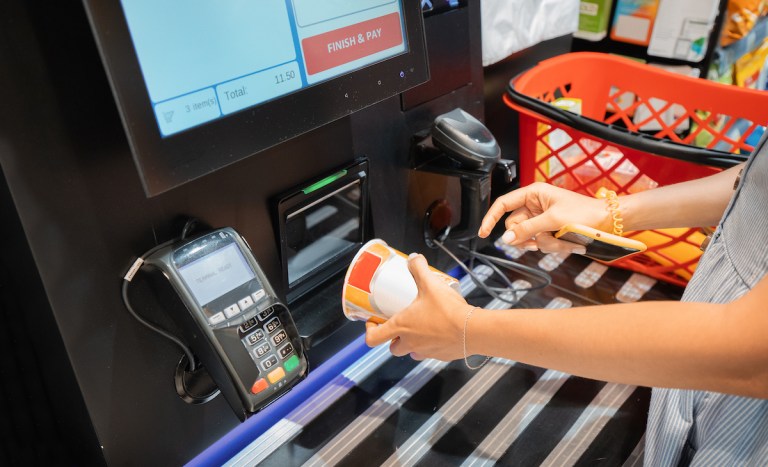In a Friday (Sept. 29) LinkedIn post, Charlie Mills, head of in-store and local marketing at the tech giant’s Amazon Fresh grocery chain, announced that at a Fresh location in London, the company has implemented traditional self-checkout kiosks in addition to its existing frictionless checkout system.
“Customers get the choice of scanning and paying for items using the self-checkout, and they can still check out at the gates using our Just Walk Out technology,” Mills said in the post. “The Amazon Fresh in-store shopping experience is made possible by the same types of technologies used in self-driving cars: computer vision, sensor fusion and deep learning. … Using the self-checkout adds another convenient way to shop.”
The move suggests that there has been demand from consumers for more familiar checkout options, indicating that perhaps the radically different in-store journey that Just Walk Out-style autonomous solutions provide may be too big a leap for many consumers.
The news comes a couple months after Bloomberg reported that Amazon is adding self-checkout kiosks to several Fresh stores in the United States, and more than half a year after the company began adding manned checkouts alongside its Just Walk Out technology in London. Yet the company is also expanding its autonomous checkout system, most recently bringing it to clothing stores.
Amazon did not immediately respond to PYMNTS’ request for comment about how its approach to in-store checkout is evolving.
Advertisement: Scroll to Continue
Overall, consumers seem to seek out the comfort of more familiar technologies. In an interview with PYMNTS, Jordan Fisher, CEO of autonomous retail technology company Standard AI, said changing shopper behavior requires a slow, gradual approach, allowing consumers to stick with the systems they feel comfortable with until they are ready to make the leap.
“I think hybrid is the way forward,” he said. “If you imagine 10 years ago, when self-checkout was really starting to be deployed, if [retailers] had just said, ‘OK, it’s self-checkout everywhere — 100% has to be through self-checkout,’ it would have been a disaster. [You] need that hybrid, and we’re seeing the same thing with autonomous [checkout].”
The PYMNTS study “Big Retail’s Innovation Mandate: Convenience and Personalization,” a collaboration with ACI Worldwide, drew from a survey of 300 retailers across the U.S. and the United Kingdom. It found that 61% of grocers think consumers would be very or extremely likely to switch merchants if not given access to self-checkout kiosks.
Consumers demand self-service options, according to data highlighted in PYMNTS’ ”Digital-First Banking Tracker® Series Report.” The report cited findings that 84% of consumers in the U.S. said they enjoy using self-service kiosks, and two-thirds of individuals said they favor self-service models over staffed checkout lanes.
Overall, computer vision checkout is catching on across the grocery and convenience store sectors. Most recently, food aggregator Grubhub has been adding Just Walk Out checkout to colleges’ on-campus convenience stores, and 7-Eleven Australia is gearing up to roll out a test of frictionless checkout in partnership with Grabango.




